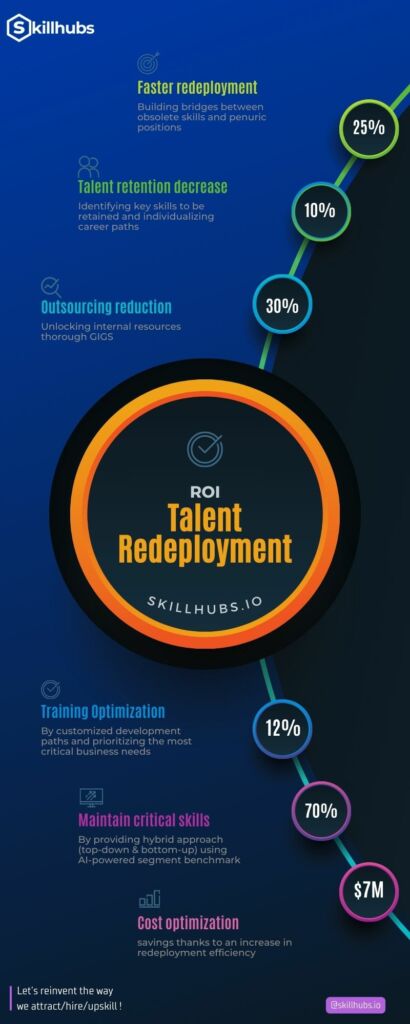In an era where technological advancements occur at an unprecedented pace, businesses are facing a critical challenge: the need for continuous talent redeployment. This strategic necessity is not just about staying relevant; it’s about leveraging human capital to foster innovation, maintain competitiveness, and ensure sustainability in a rapidly evolving marketplace.
The Evolving Landscape of Talent Management
The progression of technological revolutions has significantly accelerated, marking a shift from decades-long cycles to transformations that now unfold within a handful of years. This rapid pace of change necessitates a dynamic approach to talent management, where the continuous redeployment of skills becomes a cornerstone of organizational resilience.
The OECD reports a striking reality: around 27% of jobs are at risk of becoming obsolete due to the rapid progress of AI. This alarming statistic highlights the urgent need for organizations to adapt, not just to keep pace but to proactively harness technological advancements for greater resilience.
Understanding Talent Redeployment
Talent redeployment refers to the strategic process of transitioning employees from roles in declining sectors to positions in emerging, growth-oriented areas. It is an adaptive strategy that allows organizations to align their workforce with current and future business needs, thus ensuring sustained growth and innovation.
Why Talent Redeployment Is More Crucial Than Ever
Several factors underscore the importance of talent redeployment in today’s business environment:
Technological Advancements: The advent of AI and automation technologies poses a significant impact on job roles, particularly affecting white-collar positions. A study by the University of Pennsylvania and OpenAI highlights that two-thirds of jobs are at risk of automation, emphasizing the need for businesses to adapt their workforce strategies.
Economic Shifts: The current economic climate, characterized by a cautious approach to recruitment and the potential for layoffs, further stresses the importance of efficient talent management and redeployment strategies.
Skill Obsolescence: The rapid pace of technological progress has dramatically shortened the lifespan of skills. Today, a skill’s relevance may last only a couple of years, demanding continuous learning and adaptation from the workforce.
“In 1987, the lifespan of a skill was 30 years, today it’s closer to 2 years.”
Strategic Benefits of Continuous Talent Redeployment
Implementing a continuous talent redeployment strategy offers several advantages:
Enhanced Return on Investment
Adopting a proactive approach to talent management can yield significant financial benefits, including reduced recruitment costs, lower redundancy expenses, and decreased absenteeism rates. These savings contribute to a stronger financial foundation and a superior return on investment (ROI), often in less than 12 months.

Building a Collaborative Culture
Continuous talent redeployment fosters a culture of learning, growth, and adaptability. It encourages the sharing of knowledge and skills across departments, enhancing the organization’s collective intelligence and innovation capacity.
Unlocking New Career Opportunities
By focusing on internal talent development and redeployment, organizations can offer employees a path for career progression and personal growth. This not only boosts morale and retention but also strengthens the employer brand, attracting top talent.
Navigating the Challenges of Talent Redeployment
While the benefits are clear, implementing a successful talent redeployment strategy requires careful planning and execution. Organizations must:
-
Identify Emerging Skill Needs: Stay abreast of industry trends to anticipate the skills that will be in demand in the future.
-
Develop a Flexible Workforce: Foster a culture of continuous learning and adaptability, encouraging employees to acquire new skills and embrace change.
-
Leverage Technology: Utilize digital tools and platforms to facilitate the assessment, training, and redeployment of talent efficiently.
Future Directions: Collaborative Efforts for a Skilled Workforce
The journey towards effective talent redeployment is a collaborative effort involving businesses, educational institutions, and government agencies. Partnerships are essential to align educational curricula with industry needs, ensuring that the workforce is prepared for the demands of tomorrow.
Conclusion
As we navigate the complexities of the modern business landscape, the strategic redeployment of talent emerges as a critical pathway to resilience and growth. By embracing a continuous and proactive approach to talent management, organizations can not only adapt to the challenges of today but also position themselves for success in the future.
